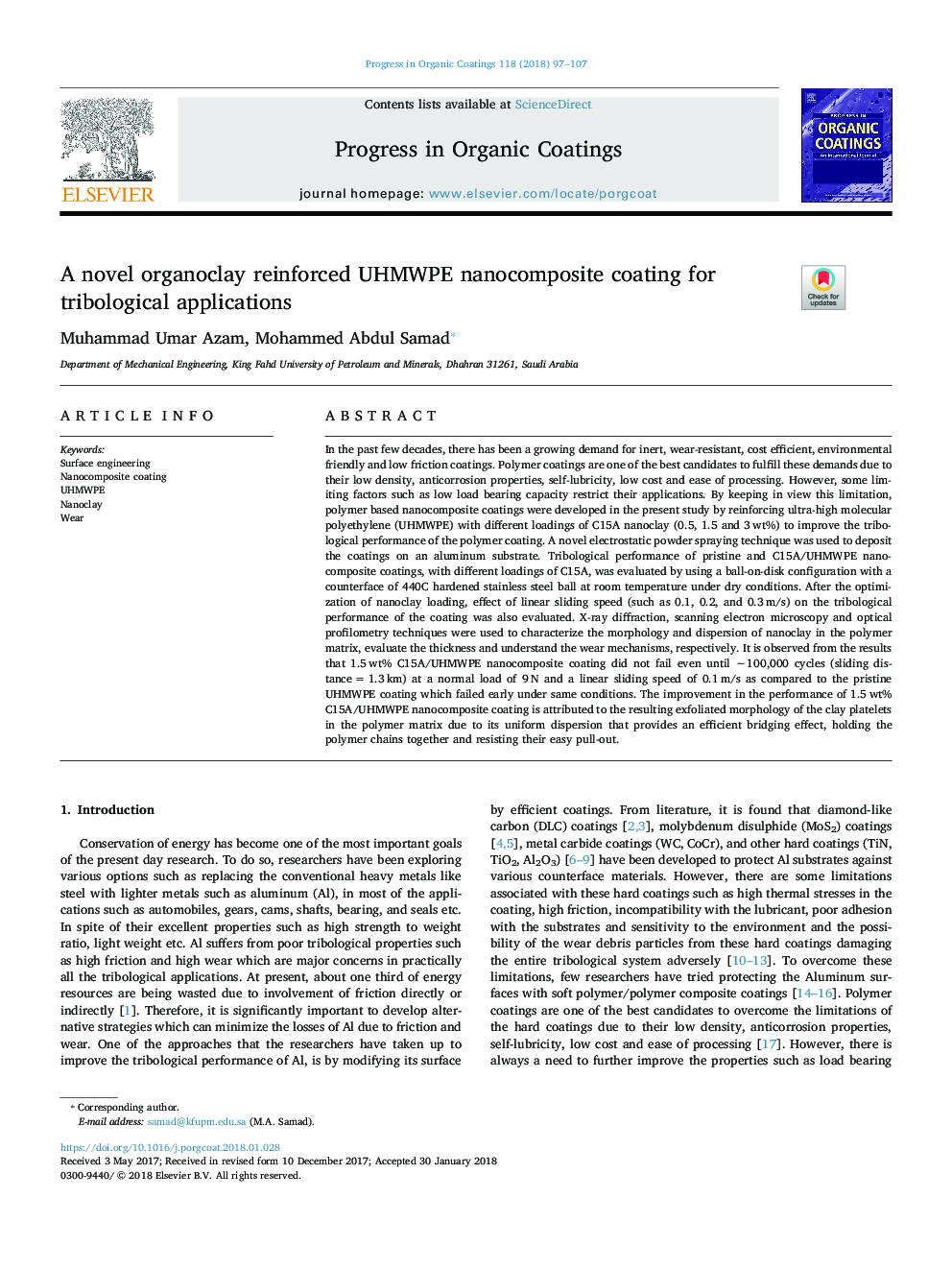| Article ID | Journal | Published Year | Pages | File Type |
|---|---|---|---|---|
| 7105995 | Progress in Organic Coatings | 2018 | 11 Pages |
Abstract
In the past few decades, there has been a growing demand for inert, wear-resistant, cost efficient, environmental friendly and low friction coatings. Polymer coatings are one of the best candidates to fulfill these demands due to their low density, anticorrosion properties, self-lubricity, low cost and ease of processing. However, some limiting factors such as low load bearing capacity restrict their applications. By keeping in view this limitation, polymer based nanocomposite coatings were developed in the present study by reinforcing ultra-high molecular polyethylene (UHMWPE) with different loadings of C15A nanoclay (0.5, 1.5 and 3â¯wt%) to improve the tribological performance of the polymer coating. A novel electrostatic powder spraying technique was used to deposit the coatings on an aluminum substrate. Tribological performance of pristine and C15A/UHMWPE nanocomposite coatings, with different loadings of C15A, was evaluated by using a ball-on-disk configuration with a counterface of 440C hardened stainless steel ball at room temperature under dry conditions. After the optimization of nanoclay loading, effect of linear sliding speed (such as 0.1, 0.2, and 0.3â¯m/s) on the tribological performance of the coating was also evaluated. X-ray diffraction, scanning electron microscopy and optical profilometry techniques were used to characterize the morphology and dispersion of nanoclay in the polymer matrix, evaluate the thickness and understand the wear mechanisms, respectively. It is observed from the results that 1.5â¯wt% C15A/UHMWPE nanocomposite coating did not fail even until â¼100,000 cycles (sliding distanceâ¯=â¯1.3â¯km) at a normal load of 9â¯N and a linear sliding speed of 0.1â¯m/s as compared to the pristine UHMWPE coating which failed early under same conditions. The improvement in the performance of 1.5â¯wt% C15A/UHMWPE nanocomposite coating is attributed to the resulting exfoliated morphology of the clay platelets in the polymer matrix due to its uniform dispersion that provides an efficient bridging effect, holding the polymer chains together and resisting their easy pull-out.
Related Topics
Physical Sciences and Engineering
Chemical Engineering
Process Chemistry and Technology
Authors
Muhammad Umar Azam, Mohammed Abdul Samad,
